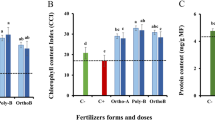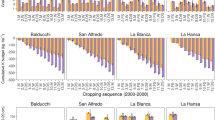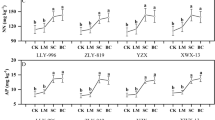Abstract
DURING the War, when many poor upland areas and commons in Britain were ploughed up for crop production, potatoes were commonly planted as a first crop in view of their tolerance to acid soil conditions. Many failures, however, were experienced where the soils were very strongly acid, with pH values of the order of 4·0, and it was shown that liming was necessary to correct the unfavourable conditions. Plants which survived on these acid soils usually showed pronounced symptoms of calcium deficiency in the haulms, and it was clear that the supply of this element was an important factor in determining success or failure of the crops.
This is a preview of subscription content, access via your institution
Access options
Subscribe to this journal
Receive 51 print issues and online access
$199.00 per year
only $3.90 per issue
Buy this article
- Purchase on SpringerLink
- Instant access to full article PDF
Prices may be subject to local taxes which are calculated during checkout
Similar content being viewed by others
References
Wallace, T., Hewitt, E. J., and Nicholas, D. J. D., Nature, 156, 778 (1945).
Hewitt, E. J., Ann. Rept. Long Ashton Res. Stat. 51 (1945): 50 (1946).
Author information
Authors and Affiliations
Rights and permissions
About this article
Cite this article
WALLACE, T., HEWITT, E. Effects of Calcium Deficiency on Potato Sets in Acid Soils. Nature 161, 28 (1948). https://doi.org/10.1038/161028a0
Issue date:
DOI: https://doi.org/10.1038/161028a0
This article is cited by
-
Relationship of calcium nutrition to internal brown spot of potato tubers and sub-apical necrosis of sprouts
American Potato Journal (1986)
-
Effects of calcium on sprout growth and sub-apical necrosis in Majestic potatoes
Potato Research (1975)
-
Effects of calcium on sprout growth of ten potato cultivars
Potato Research (1975)
-
Influence of sprout tip necrosis and rosette sprout formation on internal sprouting of potatoes
American Potato Journal (1969)
-
Production in Potato of Leaf Symptoms observed on Plants on Acid Soils together with Associated Tuber Necrosis
Nature (1951)



